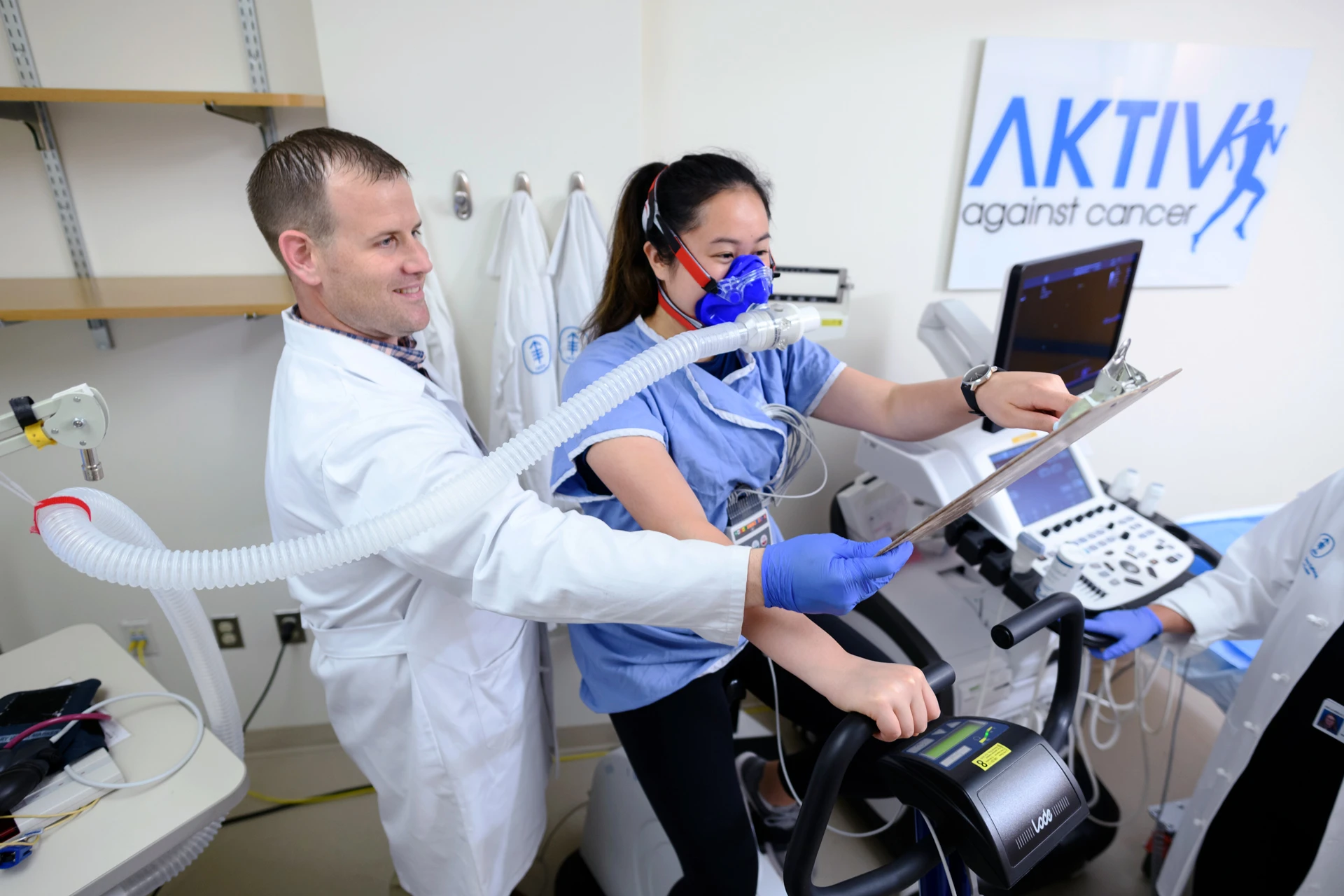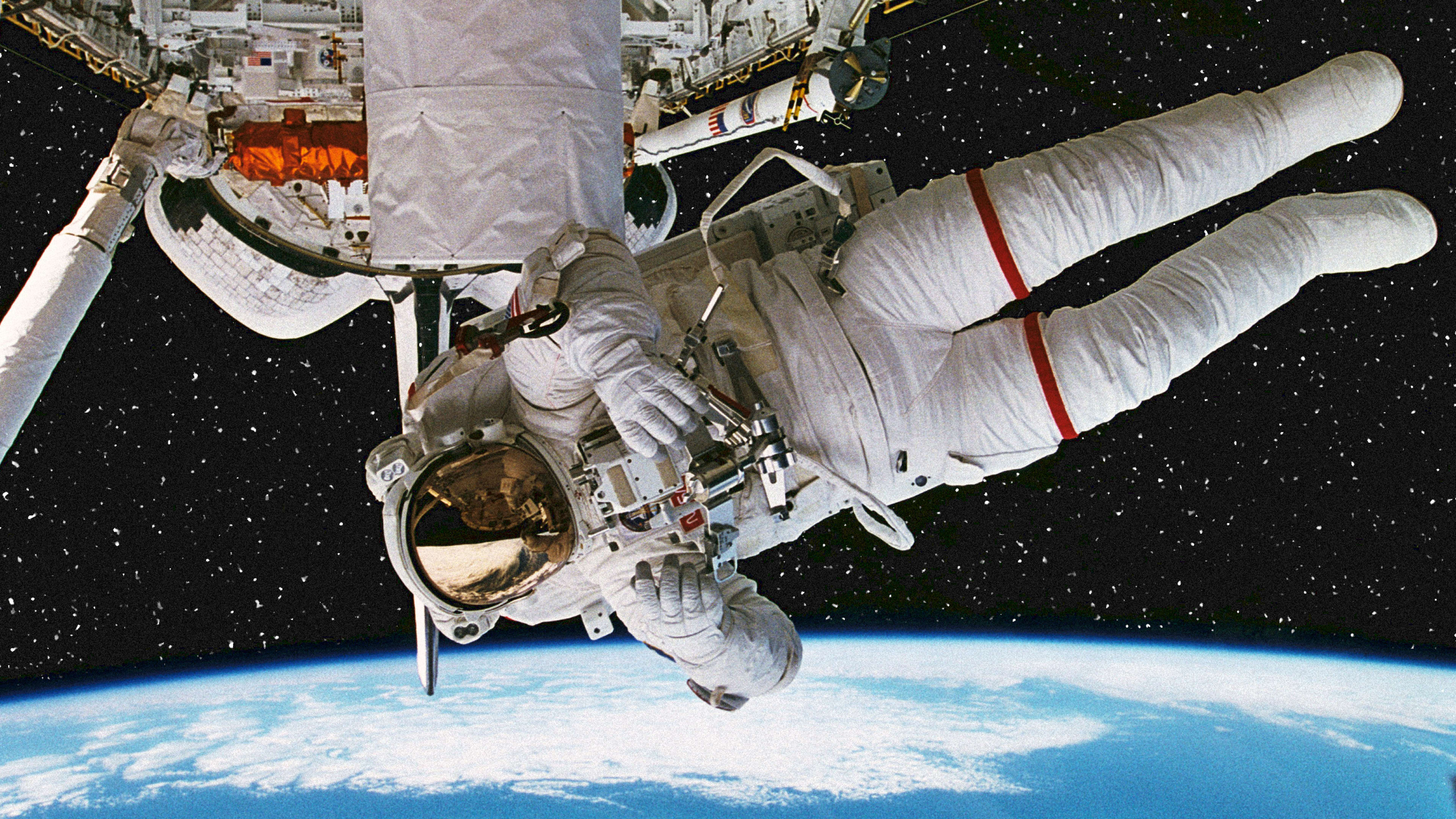Space exploration has done more than teach us about what lies beyond our atmosphere. It’s led to discoveries that have helped us all here on Earth, from the technology behind CAT scan and MRI machines to the invention of memory foam to new osteoporosis drugs. Now, researchers think that cancer patients could take a cue from the ways astronauts prepare for space travel to keep their bodies healthier as they undergo treatment.
Space travel takes a toll on the human body. Astronauts on months-long missions face muscle atrophy, weakening bones, and increased risk of cardiovascular disease. So do cancer patients, thanks to the intense therapies they receive during treatment.
Whereas astronauts prepare for these health risks with a state-of-the-art exercise regimen before, during, and after their time in space, cancer patients are often told to rest while receiving treatments such as chemotherapy. To Jessica Scott, an exercise physiology researcher at Memorial Sloan Kettering Cancer Center, that seemed a bit backwards.

Writing in the journal Cell, Scott and other researchers suggest that cancer patients mimic astronauts’ exercise schedules—even just walking on a treadmill—as a way to reduce the side effects and stay healthier throughout treatment.
Scott started to notice parallels between astronauts and cancer patients when she worked at NASA’s Johnson Space Center, where she was a senior scientist for seven years. She went there to study the side effects of spaceflight and realized that they mirror a lot of the side effects for cancer patients.
“Astronauts and cancer patients have what we call ‘multiple hits,'” she says. For both, there are three key factors: preexisting health risks (such as hypertension); “direct” hits such as chemotherapy for cancer patients or reduced gravity and radiation exposure for astronauts; and “indirect” hits, which happen when a patient doesn’t feel well or an astronaut can’t do all the daily things they do on Earth, and so their weight fluctuates or they’re inactive for a period of time.
“When you take those three hits together, every system in the human body is impacted,” says Scott. “Astronauts have changes in taste just like [cancer] patients have changes in taste. Astronauts describe having ‘space fog,’ which is very similar to what cancer patients describe as ‘chemo brain,’ where they may have trouble remembering things or trouble focusing.”
The good news for cancer patients is that, thanks to treatment advancements, five-year survival rates have improved dramatically since chemotherapy development took off in the 1960s (coincidentally, the same decade we saw NASA make huge strides). There are currently about 16 million cancer survivors in the United States, and that number is only expected to increase. The bad news: As patients survive their cancers, they face health risks from their treatments. Cardiovascular disease is now the leading cause of death among survivors.
“It’s a double-edged sword,” says Scott. “You cure the cancer, but then you also start to develop these secondary complications that patients are now having to deal with.”
This is where that exercise regiment astronauts follow could make a huge difference, she says, and some preliminary research has shown promising results. In fact, patients who face other health complications, such as heart attacks or chronic obstructive lung disease, are often referred to structured exercise programs, yet this isn’t the standard of care when it comes to oncology.
There’s more research to be done, though. Scott is starting to implement some elements of NASA’s program in clinical trials of cancer patients, using all the same assessments astronauts go through and even delivering treadmills to some patients’ homes, so they can videoconference with “mission control” (i.e. Sloan Kettering) while working out, just like when astronauts are many miles from Earth. There’s not yet a one-size-fits-all answer for what type of exercises people should do or how it could help different kinds of patients, but Scott says it’s the right time to start looking into how NASA’s ways could help even more people on Earth.
Recognize your brand’s excellence by applying to this year’s Brands That Matter Awards before the early-rate deadline, May 3.
